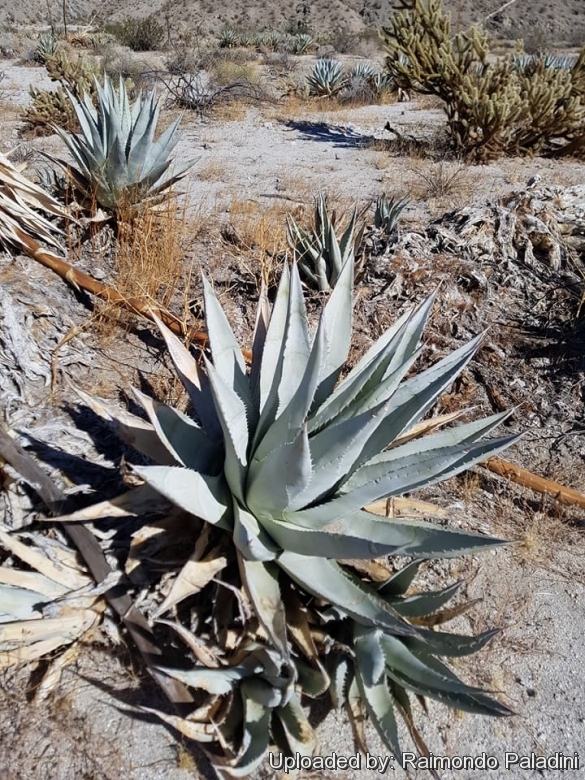
Agave deserti Photo by: Raimondo Paladini
Growing habit near Borrego Springs, California, USA.
Origin and Habitat: This species covers a broad geographic area in Southern California and northern Baja California, Mexico (Lower Colorado River Valley subdivision of the Sonoran Desert) and barely into Arizona Upland and the Mohave Desert.
Altitude: 90 and 1620 m in elevation.
Type Locality: Rancho San Felipe, San Diego County, California.
Habitat: This is one of the most desert-adapted agaves, that strives even in the hottest, most arid portion of the desert, on sandy flats and rocky or gravelly slopes and washes.
Synonyms:
See all synonyms of Agave deserti
back
Accepted name in llifle Database:Agave deserti Engelm.Trans. Acad. Sci. St. Louis 3: 310 1875Synonymy: 2
Accepted name in llifle Database:Agave deserti subs. pringlei (Baker) GentryOccas. Pap. Calif. Acad. Sci. 130: 20. 1978Synonymy: 4
Accepted name in llifle Database:Agave deserti subs. simplex GentryOccas. Pap. Calif. Acad. Sci. 130: 22 (fig.). 1978Synonymy: 2
back
Common Names include:
ENGLISH: Century Plant, Desert Agave, Desert Century Plant
CATALAN (Català): Agave del desierto, Maguey del Desierto
SICILIAN (Sicilianu): Centuspati dû sdisertu
SPANISH (Español): Maguey, Mescal, Amul, Maguey de Desierto
TURKISH (Türkçe): Apaçi sabırı
Description: Agave desertiSN|361]]SN|482]] is a small to nedium-sized gray-green species. Most varieties sucker near the base to form dense colonies, but some offset by long underground rhizomes, and and few other forms rarely offset at all. In Baja California this species can be confused with the straight-leaved varieties of Agave cerulataSN|482]]SN|361]].
Stem: Acaulescent or short-stemmed with trunks 20-40 cm tall.
Rosettes: Usually 30-70 cm tall, 40-80 cm in spread compact to rather open.
Roots: It has a shallow root system.
Leaves: Variable, thick, rigid, usually 20-40(-70) long and 6-8(-10) cm wide, lanceolate to nearly straight, scarcely narrowed above the broad clasping base, acuminate, concave above, convex below and light grey to bluish-grey, yellowish green, or greenish, occasionally cross-zoned. Margins straight or undulate to crenate, armed with widely spaced marginal slender-cusped teeth, from small, the larger 2-3 mm long, to large, the larger 6-8 mm long, grey, loosely attached, mostly 15-30 mm apart. Apical spine strong, subulate to acicular, generally 2-4 cm long, light brown to greyish, openly grooved above. decurrent to the first or second tooth above.
Inflorescence: Paniculate, candelabra-like 2,5-4,5(-6) m tall, not bulbiferous,. Stalk slender with scarious triangular bracts 8-15 cm long, bearing 6 to 15 short spreading umbels near the top with.
Flowers: 12–48 per cluster, erect, yellow, 40-60 mm long. Ovary 22-40 mm long constricted near the tube, greenish; campanulate, 3–5 mm shallow lined with a thick nectiferous disk. Tepals 14-20 mm long, 6-8 mm wide, light yellow, broadly linear, spreading, rounded and abruptly hooked inward at apex. Filaments 25-35 mm long inserted at top of tube; anthers 13-18 mm long, yellow. The flowers that are attractive to hummingbirds. Some populations have red buds, which contrast beautifully with the flowers.
Blooming season: May to July
Fruits: Loculicidal capsules, short-pedicellate, ovoid to oblong or obovoid, 3,5-5,5 cm long, 1,5-1,8 cm in ndiameter, thick walled.
Seeds: Black, 4-5 x 5-6 mm broad. An individuals inflorescences may produce up to 65000 seeds!
Subspecies, varieties, forms and cultivars of plants belonging to the Agave deserti group
 Agave deserti Engelm.: (subsp. deserti) plants clumps freely usually with numerous rosettes; perianth tube, campanulate, 3-5 mm; filaments inserted at top of tube. Distribution: Southern California.
Agave deserti Engelm.: (subsp. deserti) plants clumps freely usually with numerous rosettes; perianth tube, campanulate, 3-5 mm; filaments inserted at top of tube. Distribution: Southern California.- Agave deserti subs. pringlei (Baker) Gentry: has narrower, less glaucous leves, and the terminal spine is decurrent into the corneous margin along the leaf-tip.
 Agave deserti subs. simplex Gentry: Plants usually solitary with one or only a few rosettes; perianth tube funnelform (3-)5-10 mm; filaments inserted above middle but well within tube. Distribution: Southern California and Arizona.
Agave deserti subs. simplex Gentry: Plants usually solitary with one or only a few rosettes; perianth tube funnelform (3-)5-10 mm; filaments inserted above middle but well within tube. Distribution: Southern California and Arizona.
Notes: Agave desertiSN|482]]SN|482]] is monocarpic, producing a massive terminal inflorescence that consumes the food reserves and results in the death of the long-lived leaf rosette. In the wild individual rosettes grow vegetatively for an average of 50-60 years prior to the single flowering event. As spent rosettes of wild plants die and decompose, new ones replace them on the outer margin, eventually forming ring-shaped colonies. Rings 6 m in diameter in California's Anza-Borrego Desert State Park may be more than a millennium old. Despite extremely high investment in sexual reproduction and high seed production in good years, seedlings become established infrequently under field conditions and most of the new rosettes of Agave desertiSN|482]]SN|482]] formed in the field are ramets attached to parent plants.
Bibliography: Major references and further lectures
1) Steven J. Phillips, Patricia Wentworth Comus, Arizona-Sonora Desert Museum (Tucson, Ariz.) “A natural history of the Sonoran Desert” University of California Press, 2000
2) aymond M. Turner, Janice E. Bowers, Tony L. Burgess “Sonoran Desert plants: an ecological atlas” University of Arizona Press, 2005
3) Sia Morhardt, Emil Morhardt “California desert flowers: an introduction to families, genera, and species” University of California Press, 01/Mar/2004
4) Judy Mielke “Native Plants for Southwestern Landscapes” University of Texas Press, 1993
5) Howard Scott Gentry “Agaves of Continental North America” University of Arizona Press, 01/Feb/2004
6) Urs Eggli “Illustrated Handbook of Succulent Plants: Monocotyledons” Springer, 2001
7) Hermann Jacobsen ”A Handbook of Succulent Plants: Abromeitiella to Euphorbia” Blandford Press, 1960
8) Dole, Jim W. and Rose, Betty B., “Shrubs and Trees of the Southern California Deserts” Foot-Loose Press.1996
9) Yvonne Cave “Succulents for the contemporary garden” Timber Press, 01/gen/2003
10) Stanley Desmond Smith, R. K. (Russell K.) Monson “Physiological ecology of north American desert plants: with 86 figures and 21 tables” Springer, 1997
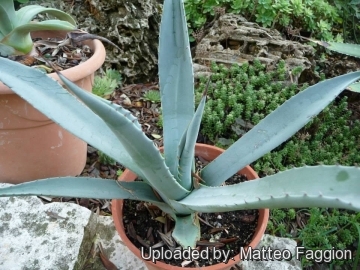 Agave deserti Photo by: Matteo Faggion
Agave deserti Photo by: Matteo Faggion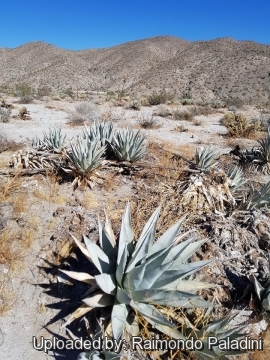 Agave deserti Growing habit near Borrego Springs, California, USA. Photo by: Raimondo Paladini
Agave deserti Growing habit near Borrego Springs, California, USA. Photo by: Raimondo Paladini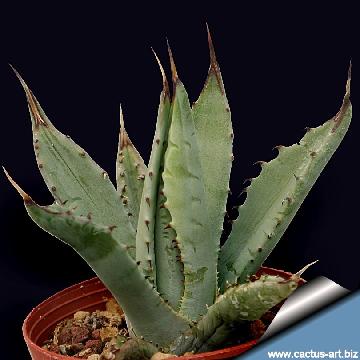 The leaves are armed with lethal stiff terminal spines and sharp marginal teeth. Photo by: Cactus Art
The leaves are armed with lethal stiff terminal spines and sharp marginal teeth. Photo by: Cactus Art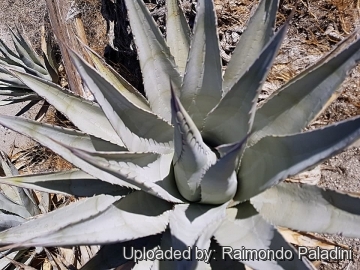 Agave deserti Growing habit near Borrego Springs, California, USA. Photo by: Raimondo Paladini
Agave deserti Growing habit near Borrego Springs, California, USA. Photo by: Raimondo Paladini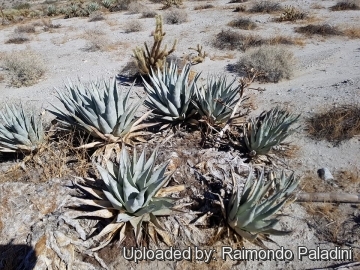 Agave deserti Growing habit near Borrego Springs, California, USA. Photo by: Raimondo Paladini
Agave deserti Growing habit near Borrego Springs, California, USA. Photo by: Raimondo Paladini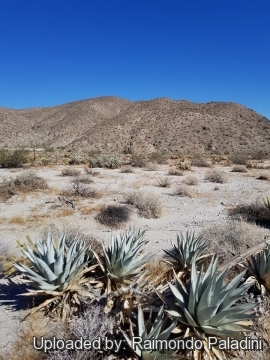 Agave deserti Growing habit near Borrego Springs, California, USA. Photo by: Raimondo Paladini
Agave deserti Growing habit near Borrego Springs, California, USA. Photo by: Raimondo Paladini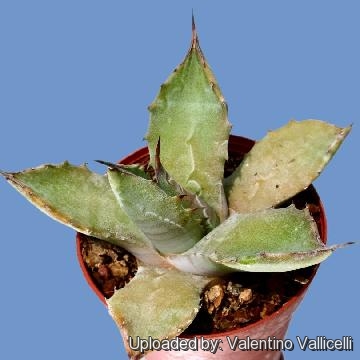 Agave deserti (Desert Agave). This is is one of the most drought-tolerant agaves. Photo by: Valentino Vallicelli
Agave deserti (Desert Agave). This is is one of the most drought-tolerant agaves. Photo by: Valentino VallicelliSend a photo of this plant.The gallery now contains thousands of pictures, however it is possible to do even more. We are, of course, seeking photos of species not yet shown in the gallery but not only that, we are also looking for better pictures than those already present.
Read More... Cultivation and Propagation: Agave desertiSN|482]]SN|482]] is an easy-to-grow species though relatively slow growing.
Growing rate: Agave desertiSN|482]]SN|482]] is a very slow-growing species; even in cultivation with generous irrigation it takes at least 20 years to flower.
Soil: It needs a very well-drained, soil.
Repotting: Use pot with good drainage.
Watering: Water regularly during the growing season from spring to autumn. In winter watering this plant can be done once every 1-2 months, there is no need to mist the leaves. Plants cultivated outdoors are drought tolerant and takes blasting heat and full sun.
Exposure: It do well in full sun or a lightly shaded area.
Feeding: During the beautiful season it’s good to enrich the soil using a fertilizer rich in potassium and phosphorous, but poor in nitrogen, because this chemical element doesn’t help the development of succulent plants, making them too soft and full of water.
Hardiness: Acclimated seddlings can tolerate temperatures as low as -7° C and mature plants will withstand temperatures as low as – 15° C, particularly when dry but in cultivation it is best to avoid severe freezing temperatures.
Heat Tolerance: Excellent
Uses: Because of their symmetrical form these plants are very attractive when grown in pots, containers, rockeries and embankments. They are quite versatile. Plants can be grouped together or planted among boulders in a rock or cactus garden.
Traditional uses: Agave desertiSN|482]]SN|482]] is one of the more edible agaves used extensively by the desert dwelling Indians. Young flower stalks, buds, and hearts of plants were roasted and eaten. Food thus obtained often became a dietary staple, even into drought years. Alcoholic drinks were also manufactured from the sweet juices of this and other agaves. The fibres of this plant was also used to make cloth, bowstrings, and ropes.
Propagation: Relatively easy to propagate by seeds or by suckers (if available). Sow at any time of year in a well-aerated compost at a temperatures of 22-24°C . Stand the pots in water, moisten thoroughly and drain. Scatter and press lightly the seed onto the top of the compost. But do not cover the small seeds with compost. Secure a polythene bag around the pot or cover the container with glass or and place in a warm shaded place. If possible, germinate in a propagator. Some seedlings may appear within a week or 10 days others will take longer. At lower temperatures, germination usually takes considerably longer. Once germination has taken place, remove gradually the glass or plastic and move into a good light but not in direct sun. If the young plants are exposed to too much sun, or the compost dries out, they may stop growing and often turn red; once they stop, it is often difficult to persuade them to start growing again. Never let the pots dry out-but don't saturate them either. A sodden compost is as harmful as a dry one.
Remove the basal suckers in spring or summer and let the cuttings dry for a few days before inserting in compost.

















